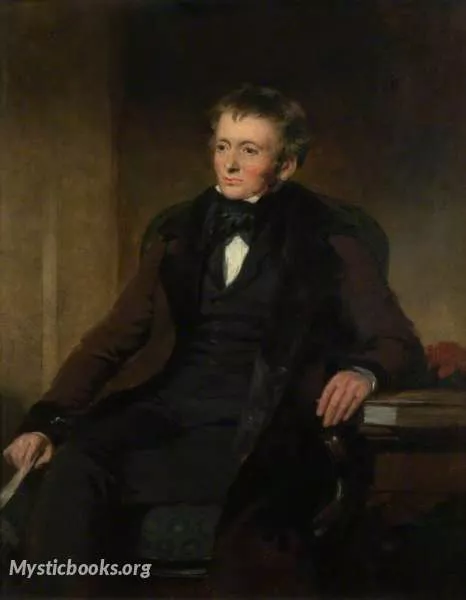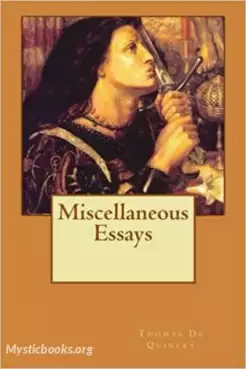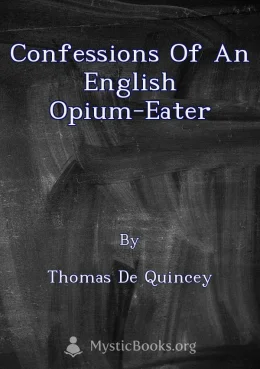
Timeline
Title
Country/Nationality
Thomas De Quincey
Thomas Penson De Quincey was an English writer, essayist, and literary critic, best known for his Confessions of an English Opium-Eater (1821). Many scholars suggest that in publishing this work De Quincey inaugurated the tradition of addiction literature in the West.
Thomas Penson De Quincey was born at 86 Cross Street, Manchester, Lancashire. De Quincey's mother moved to Bath and enrolled him at King Edward's School. He was a weak and sickly child. His youth was spent in solitude, and when his elder brother, William, came home, he wrought havoc in the quiet surroundings. De Quincey's mother was a woman of strong character and intelligence, but seems to have inspired more awe than affection in her children. She brought them up strictly, taking De Quincey out of school after three years because she was afraid he would become big-headed, and sending him to an inferior school at Wingfield, Wiltshire.
Around this time, in 1799, De Quincey first read Lyrical Ballads by William Wordsworth and Coleridge. In 1800, De Quincey, aged 15, was ready for the University of Oxford; his scholarship was far in advance of his years. "That boy could harangue an Athenian mob better than you or I could address an English one", his master at Bath had said. He was sent to Manchester Grammar School, in order that after three years' stay he might obtain a scholarship to Brasenose College, Oxford, but he took flight after 19 months.
His first plan had been to reach Wordsworth, whose Lyrical Ballads (1798) had consoled him in fits of depression and had awakened in him a deep reverence for the poet. But for that De Quincey was too timid, so he made his way to Chester, where his mother dwelt, in the hope of seeing a sister; he was caught by the older members of the family, but, through the efforts of his uncle, Colonel Penson, received the promise of a guinea (£1.05) a week to carry out his later project of a solitary tramp through Wales. From July to November 1802, De Quincey lived as a wayfarer. He soon lost his guinea by ceasing to keep his family informed of his whereabouts, and had difficulty making ends meet. Still, apparently fearing pursuit, he borrowed some money and travelled to London, where he tried to borrow more. Having failed, he lived close to starvation rather than return to his family.
Discovered by chance by his friends, De Quincey was brought home and finally allowed to go to Worcester College, Oxford, on a reduced income. Here, we are told, "he came to be looked upon as a strange being who associated with no one." In 1804, while at Oxford, he began the occasional use of opium. He completed his studies, but failed to take the oral examination leading to a degree; he left the university without graduating. He became an acquaintance of Coleridge and Wordsworth, having already sought out Charles Lamb in London. His acquaintance with Wordsworth led to his settling in 1809 at Grasmere, in the Lake District. He lived for ten years in Dove Cottage, which Wordsworth had occupied and which is now a popular tourist attraction, and for another five years at Foxghyll Country House, Ambleside. De Quincey was married in 1816, and soon after, having no money left, he took up literary work in earnest.
In July 1818 De Quincey became editor of The Westmorland Gazette, a Tory newspaper published in Kendal, after its first editor had been dismissed. He was unreliable at meeting deadlines, and in June 1819 the proprietors complained about "their dissatisfaction with the lack of 'regular communication between the Editor and the Printer'", and he resigned in November 1819. De Quincey's political sympathies tended towards the right. He was "a champion of aristocratic privilege," reserved "Jacobin" as his highest term of opprobrium, held reactionary views on the Peterloo Massacre and the Sepoy rebellion, on Catholic Emancipation and the enfranchisement of the common people.In 1821 he went to London to dispose of some translations from German authors, but was persuaded first to write and publish an account of his opium experiences, which that year appeared in the London Magazine. This new sensation eclipsed Lamb's Essays of Elia, which were then appearing in the same periodical. The Confessions of an English Opium-Eater were soon published in book form. De Quincey then made literary acquaintances. Thomas Hood found the shrinking author "at home in a German ocean of literature, in a storm, flooding all the floor, the tables and the chairs – billows of books …" De Quincey was famous for his conversation; Richard Woodhouse wrote of the "depth and reality, as I may so call it, of his knowledge … His conversation appeared like the elaboration of a mine of results …"
From this time on, De Quincey maintained himself by contributing to various magazines. He soon exchanged London and the Lakes for Edinburgh, the nearby village of Polton, and Glasgow; he spent the remainder of his life in Scotland. In the 1830s he is listed as living at 1 Forres Street, a large townhouse on the edge of the Moray Estate in Edinburgh.
Blackwood's Edinburgh Magazine and its rival Tait's Magazine received numerous contributions. Suspiria de Profundis (1845) appeared in Blackwood's, as did The English Mail-Coach (1849). Joan of Arc (1847) was published in Tait's. Between 1835 and 1849, Tait's published a series of De Quincey's reminiscences of Wordsworth, Coleridge, Robert Southey and other figures among the Lake Poets – a series that taken together constitutes one of his most important works.
By his own testimony, De Quincey first used opium in 1804 to relieve his neuralgia; he used it for pleasure, but no more than weekly, through 1812. It was in 1813 that he first commenced daily usage, in response to illness and his grief over the death of Wordsworth's young daughter Catherine. During 1813–1819 his daily dose was very high, and resulted in the sufferings recounted in the final sections of his Confessions. For the rest of his life his opium use fluctuated between extremes; he took "enormous doses" in 1843, but late in 1848 he went for 61 days with none at all. There are many theories surrounding the effects of opium on literary creation, and notably, his periods of low use were literarily unproductive.
He died in Edinburgh and is buried in St Cuthbert's Churchyard at the west end of Princes Street. His stone, in the southwest section of the churchyard on a west facing wall, is plain and says nothing of his work.
Books by Thomas De Quincey

Miscellaneous Essays of Thomas de Quincey
The Hunter Thompson of the 19th Century, de Quincey is best known for his Confessions of an English Opium Eater (an activity shared with his hero, Samuel Coleridge, much to Wordsworth’s dismay). However, de Quincey’s literary genius is best captured...

Confessions of an English Opium-Eater
Confessions of an English Opium-Eater is a deeply introspective and influential autobiography by Thomas De Quincey. Written in a majestic neoclassical style, the work explores the author's experiences with opium addiction and its profound impact on h...